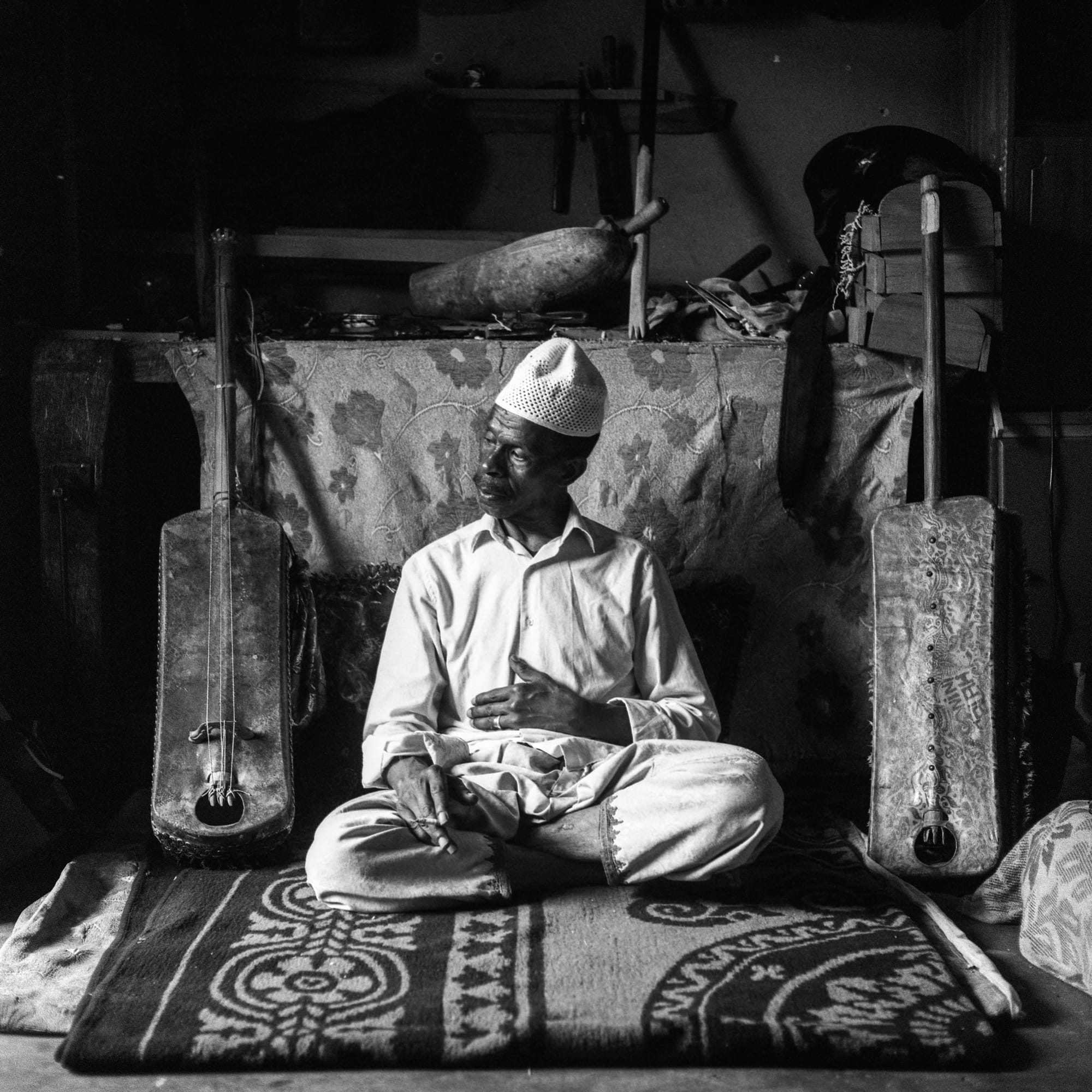
The Gnaoua, heirs to several centuries of population movements, are descendants of slaves brought to Morocco during the Saharan slave trade. Over time, they have created a form of syncretism between Moroccan Islam and the diverse beliefs of their ancestors, and today they are recognized in Morocco for their musical trance practices performed during the ritual of the lila.
Their culture, based on orality, has traditionally been transmitted and practiced in a nearly secretive manner. However, the encounter with the music industry and the advent of the internet have changed how the Gnaoua view their practices. The elders now fear the risk of certain rituals disappearing and a loss of meaning, while others see it as the logical progression of a culture opening up to the world around it.
My photography has sometimes encountered the sacred gates. But that doesn't matter; I received everything that was given to me, captured by a collective intensity that gradually became familiar to me, though I will never truly belong to it. I wandered through the city of Marrakech, in search of knowledge, from Ben Saleh to Bab Hmar, from Mouassine to the Kasbah. In a vertigo of ochre dust and the swirls of jawi, I embraced the melodic lines of something I didn't always understand. To the maâlmin, out of respect and gratitude, I brought offerings. Alongside a youth that welcomed me with open arms, I sat and listened. I photographed what we lived together, a daily life marked by the profane and the sacred. The long afternoons in the funduq of the medina, the tea, the motorcycle rides through the narrow streets crowded with tourists, heading to a concert or a lila, my pockets full of film and my guitar on my back. This guitar, which accompanies me as much as my cameras, bought in a shop in Derb Kenaria several years ago, awaits me there, in the land of the Sons of Bambara, in the corner of a restaurant. This poorly-made guitar, with one of its parts missing, given to a musician who needed it, marked the gateway to my entry into Tagnawît.
That missing piece at the head of my instrument was perhaps the one that opened the door to the Gnaoua for me.
The path is open to me, the key has been passed on. Just a fair return.
And the guembri. Always. Everywhere.
Saha koyo!
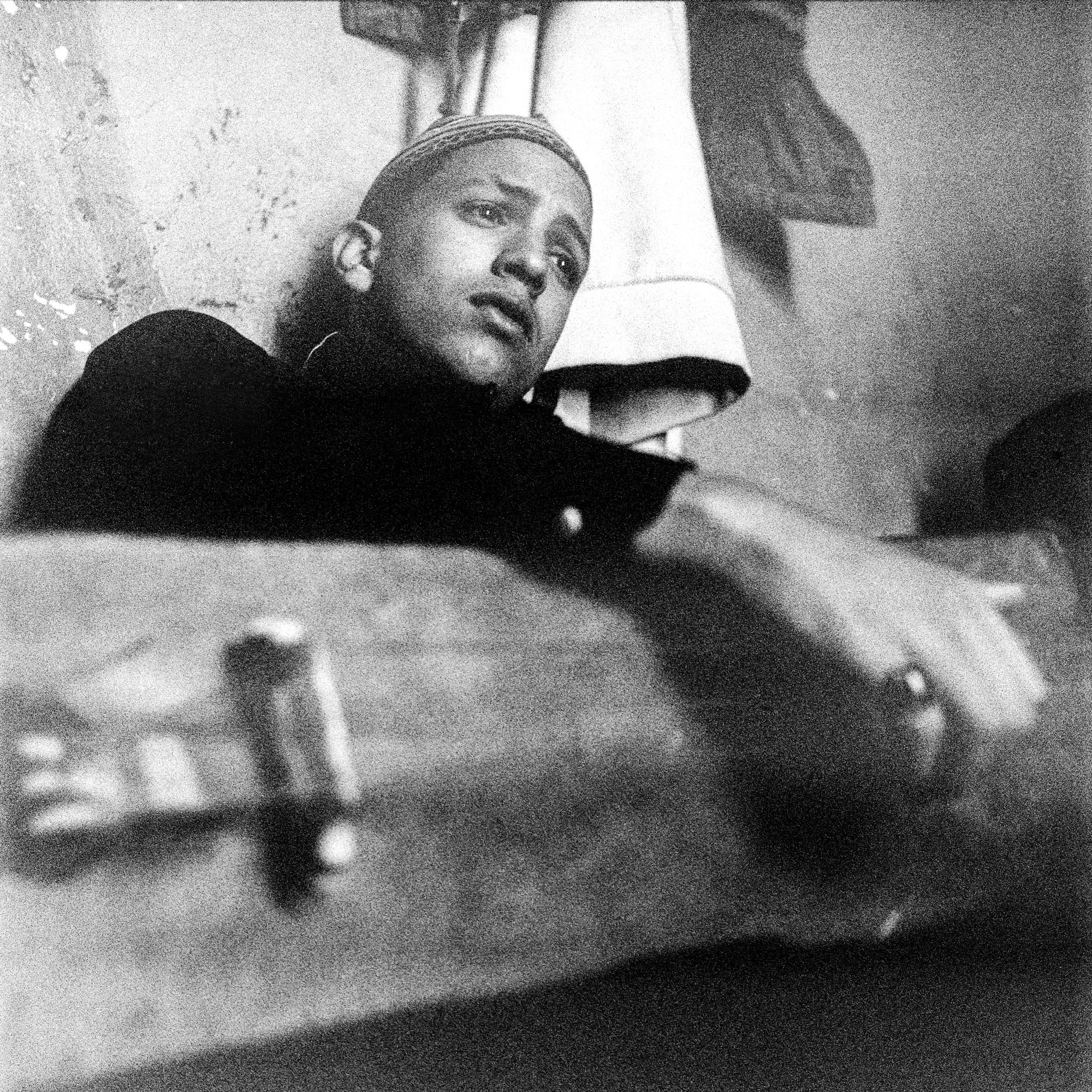
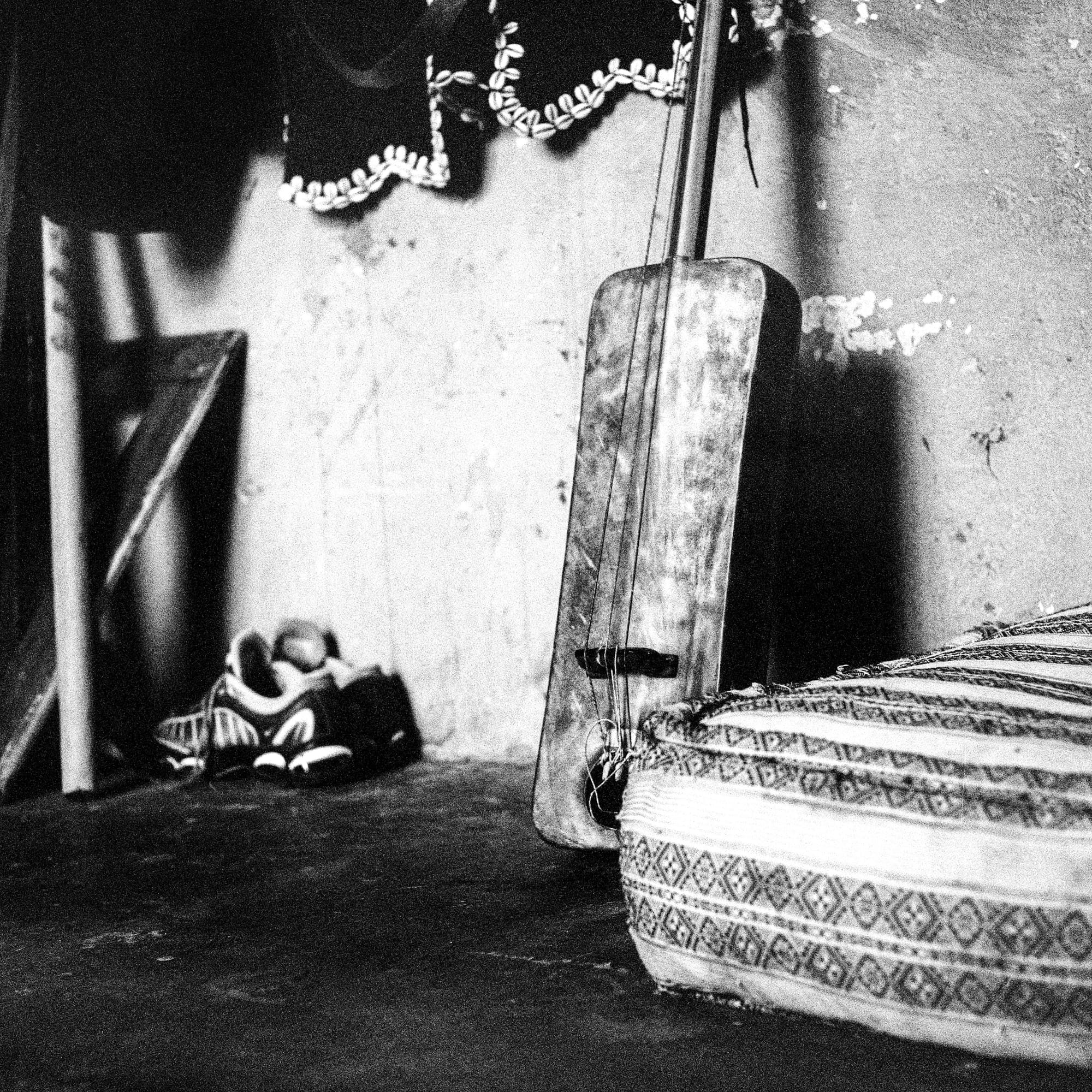
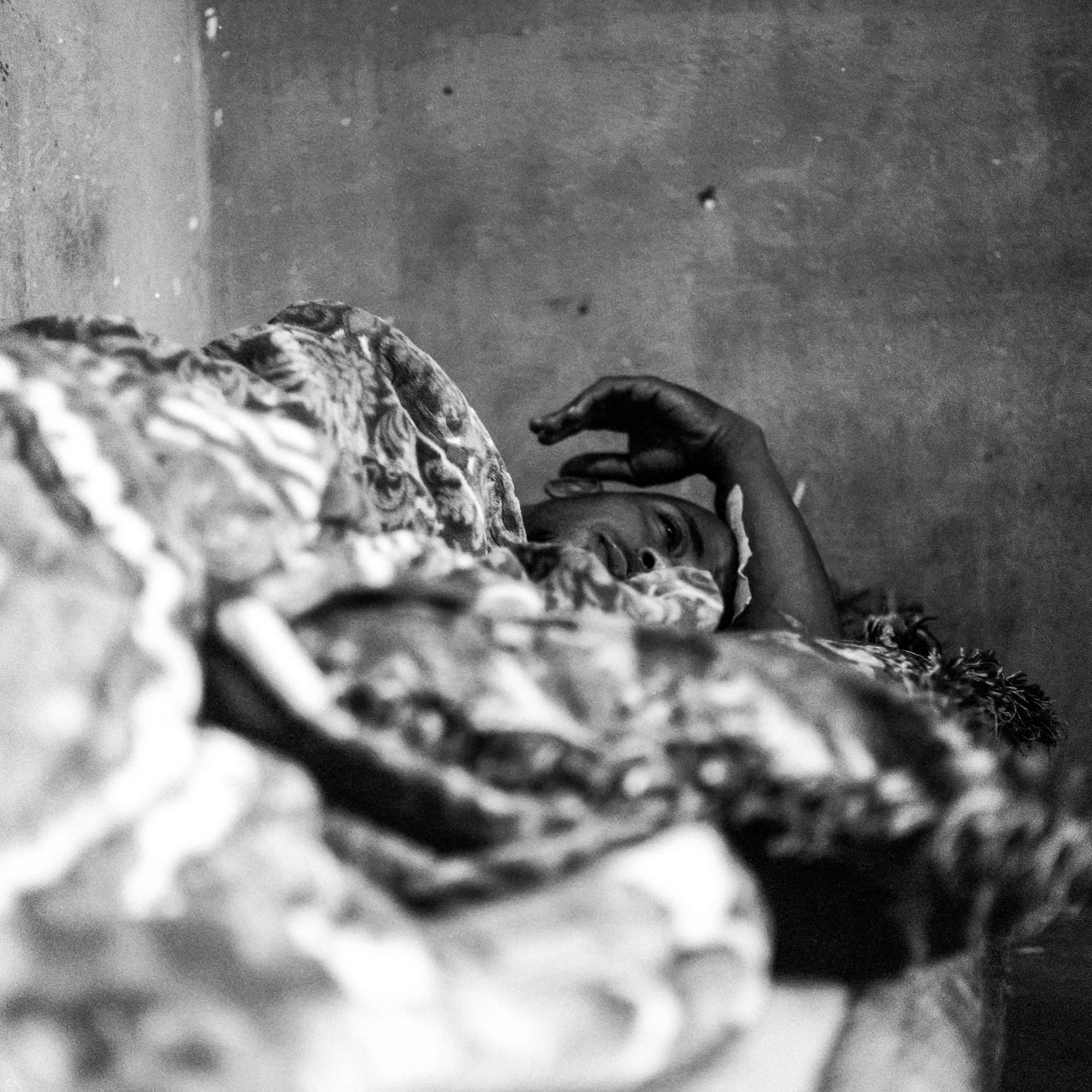
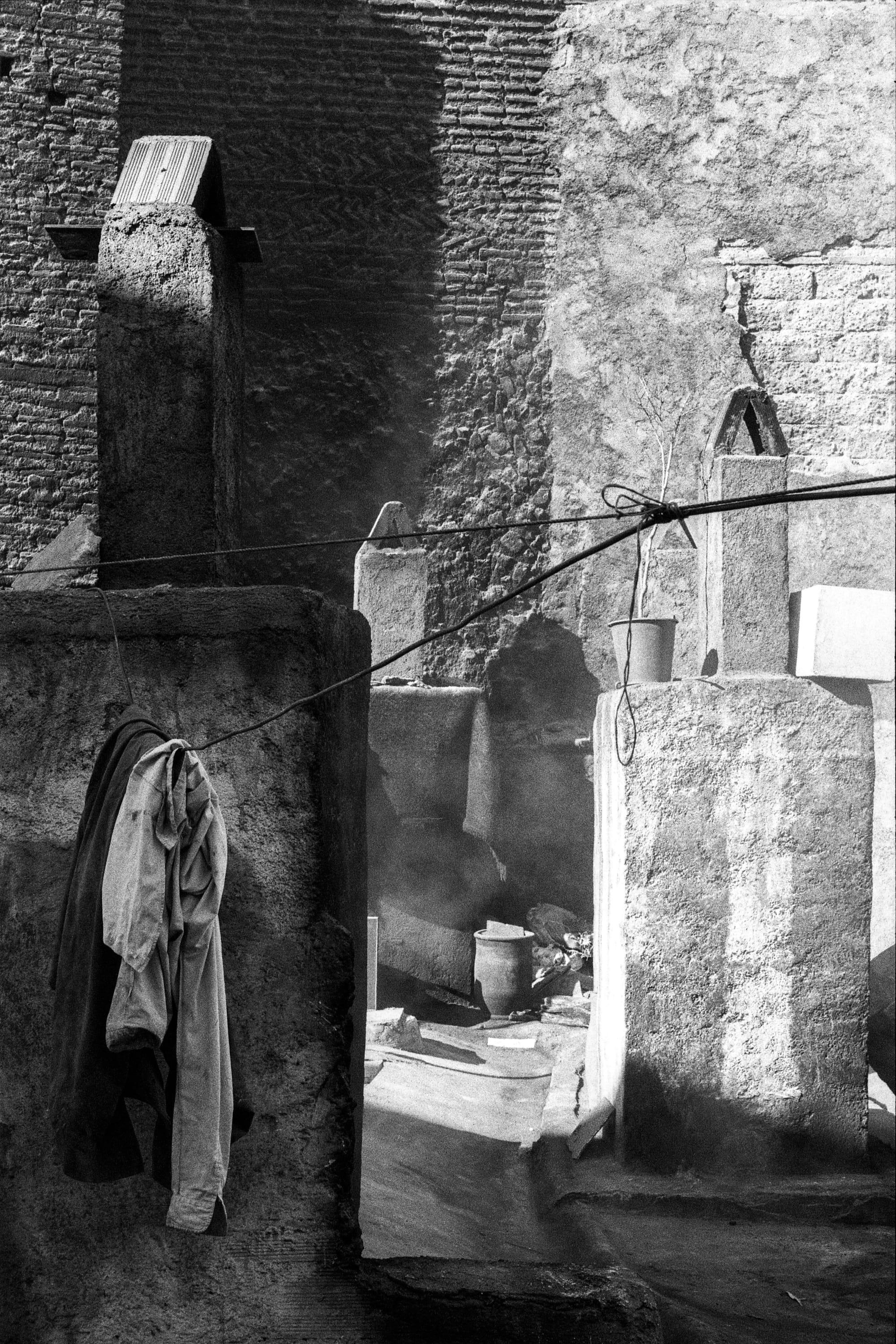
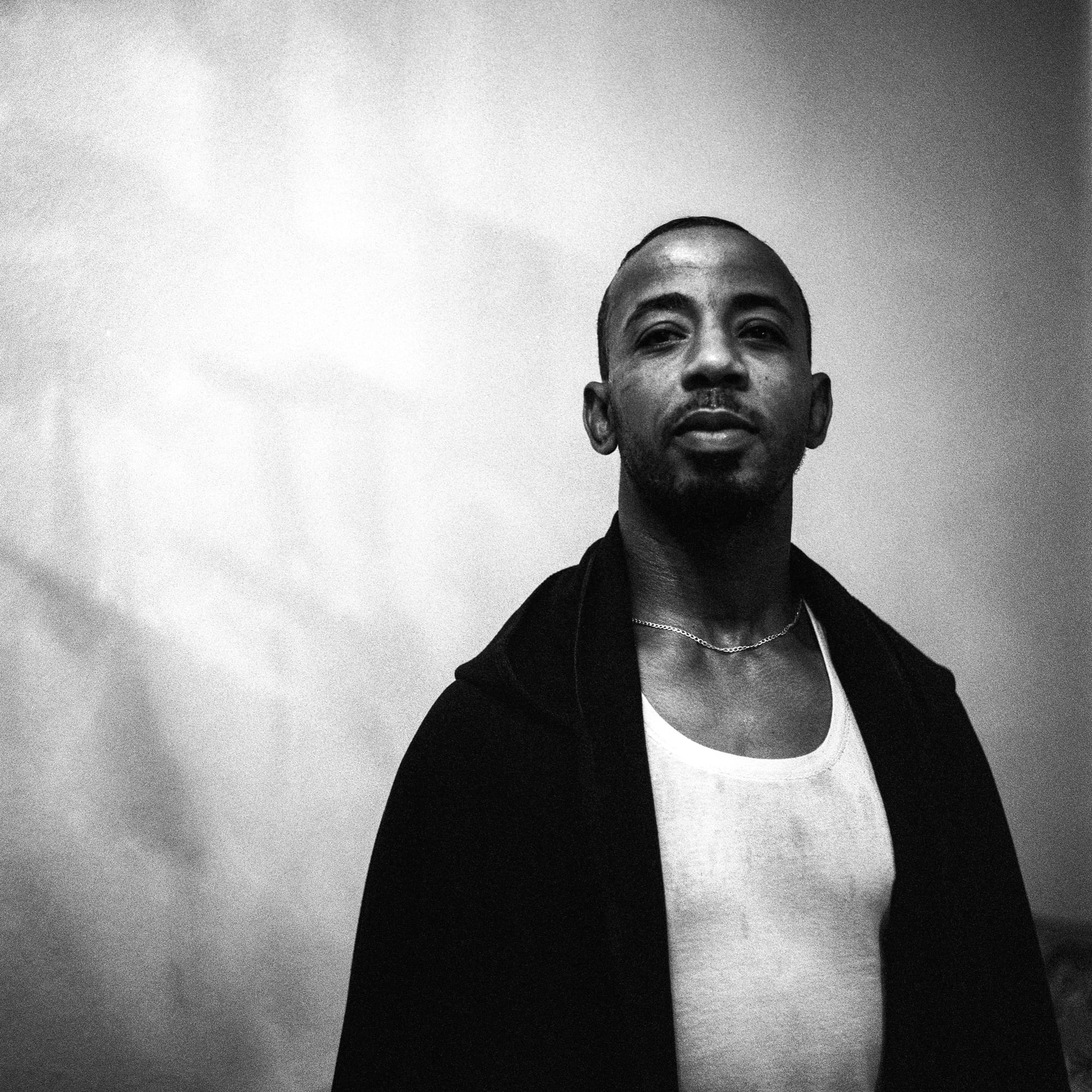
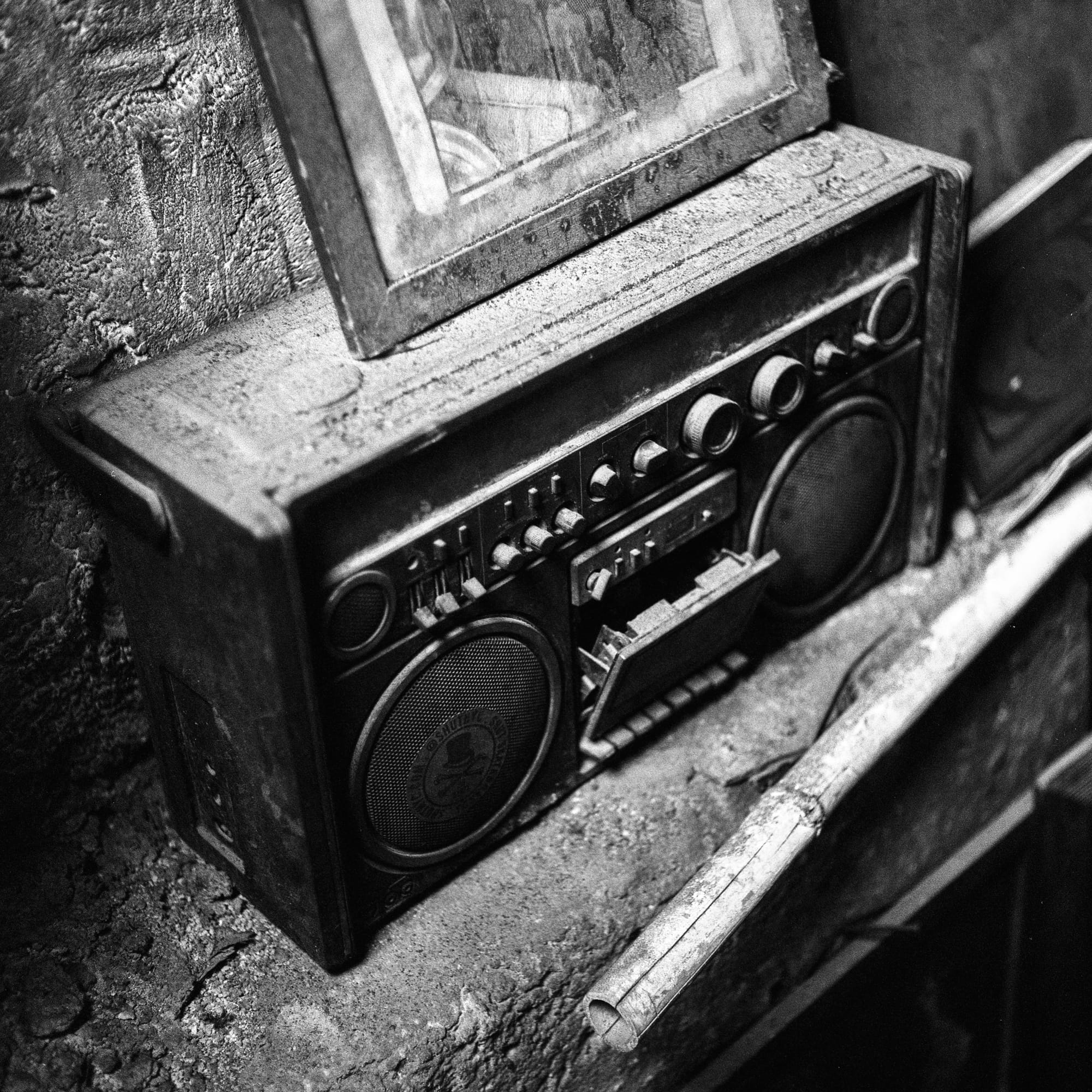
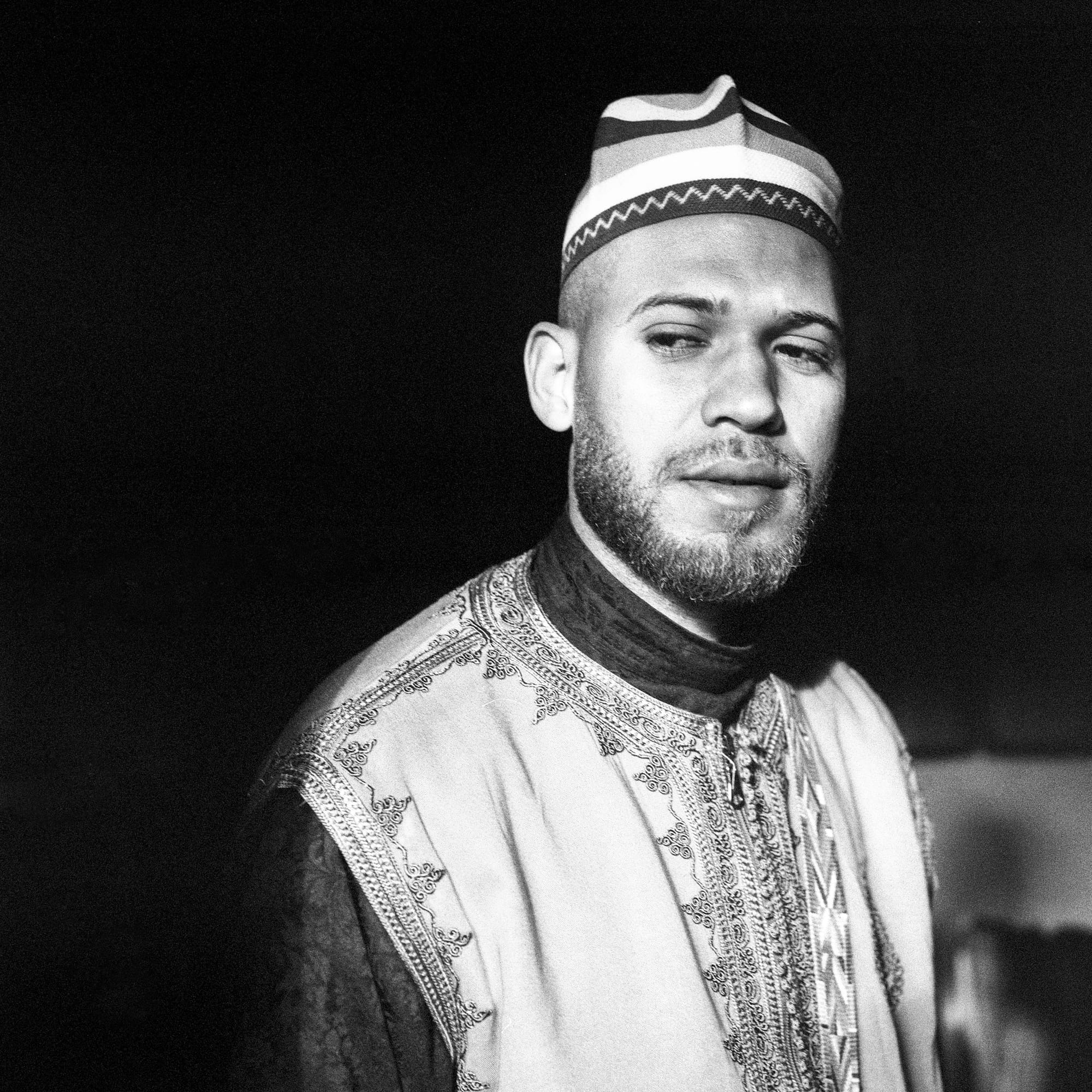
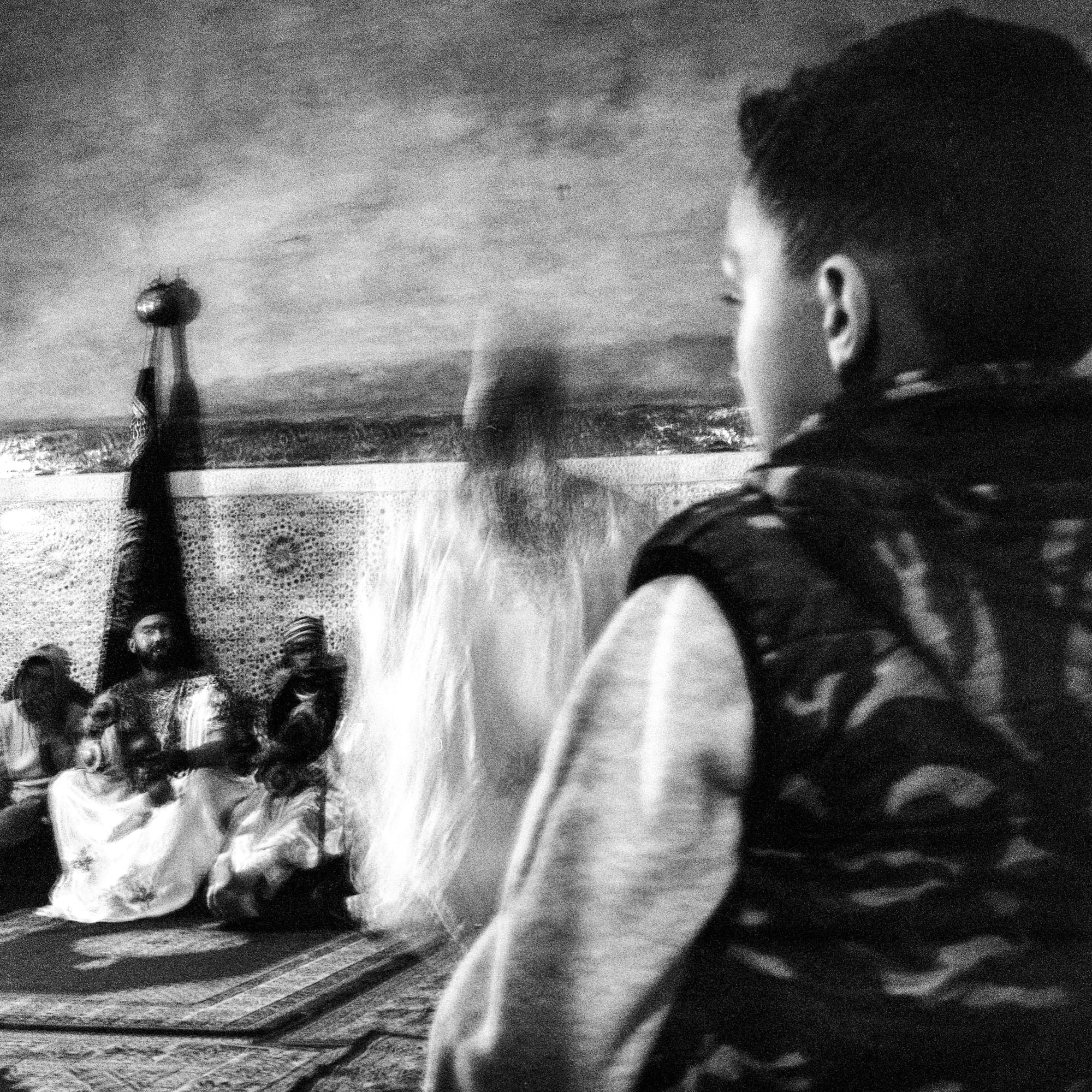
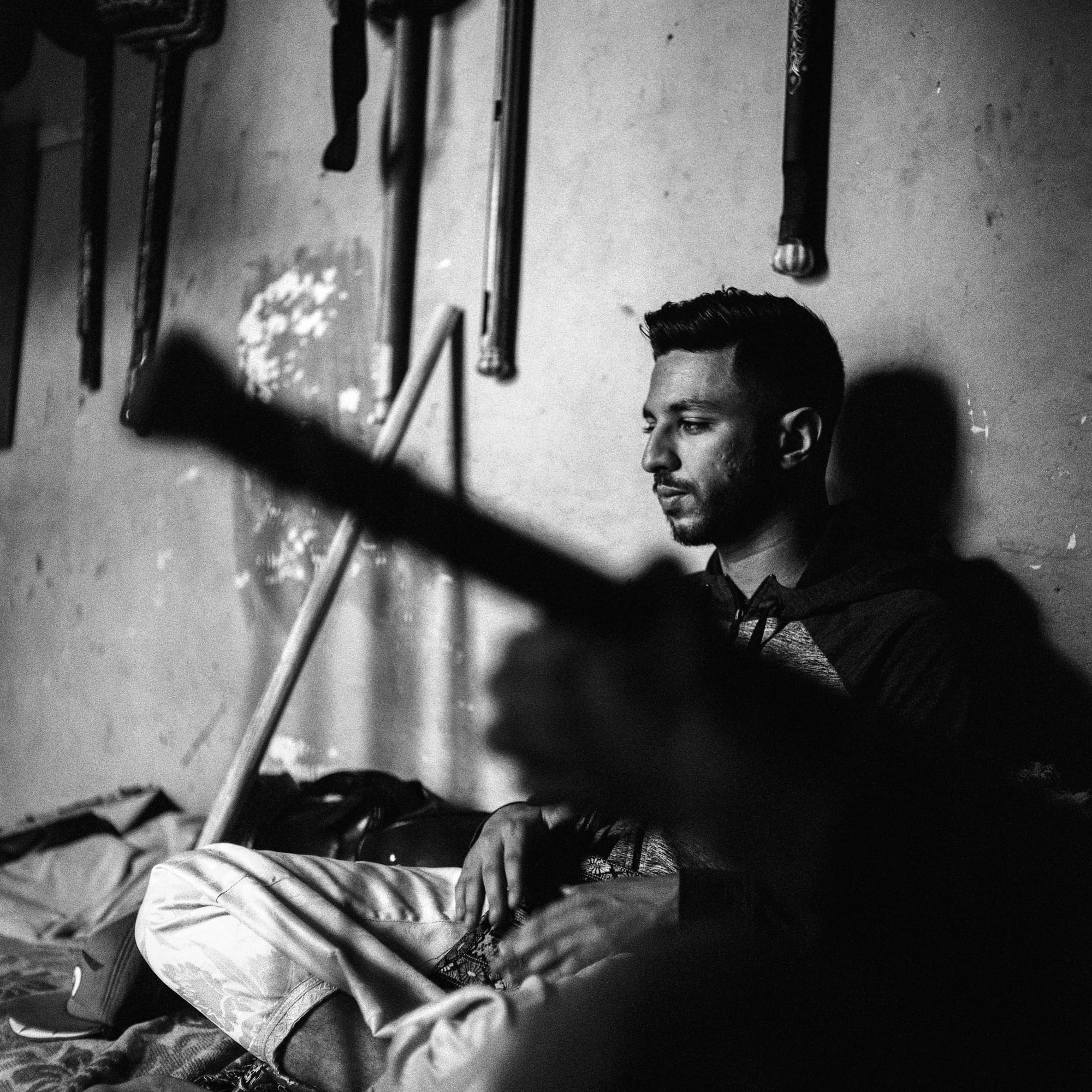
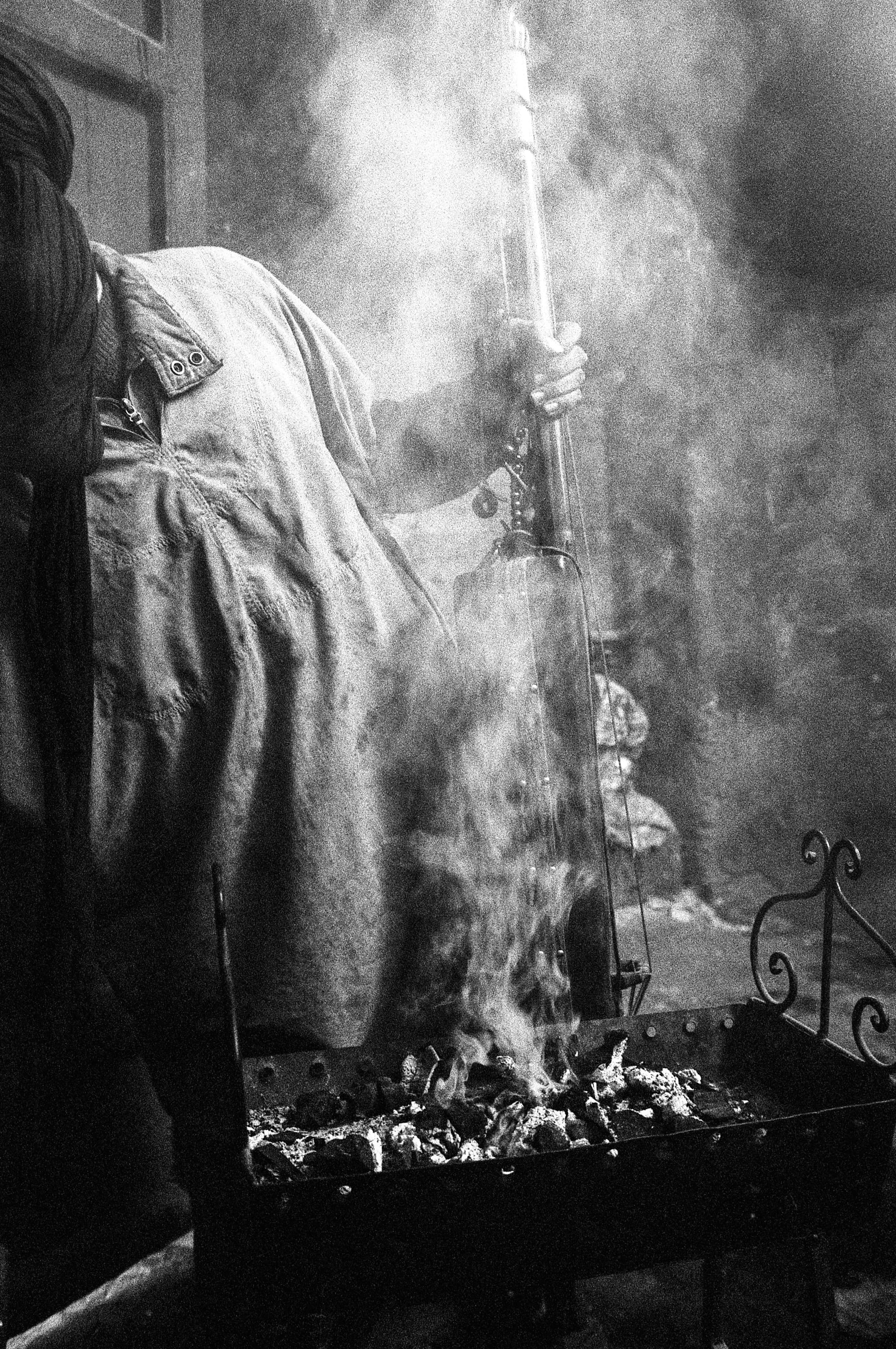
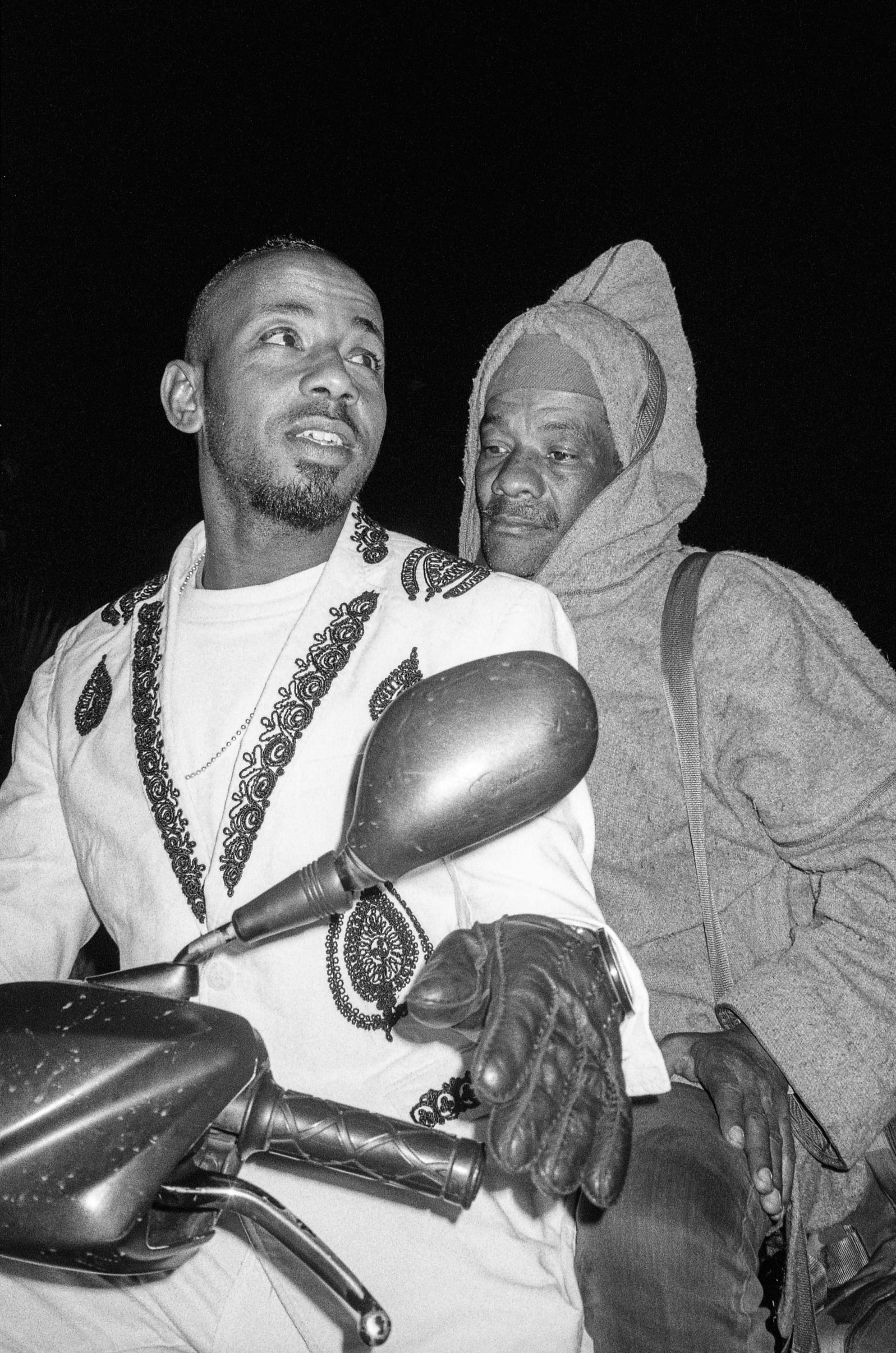
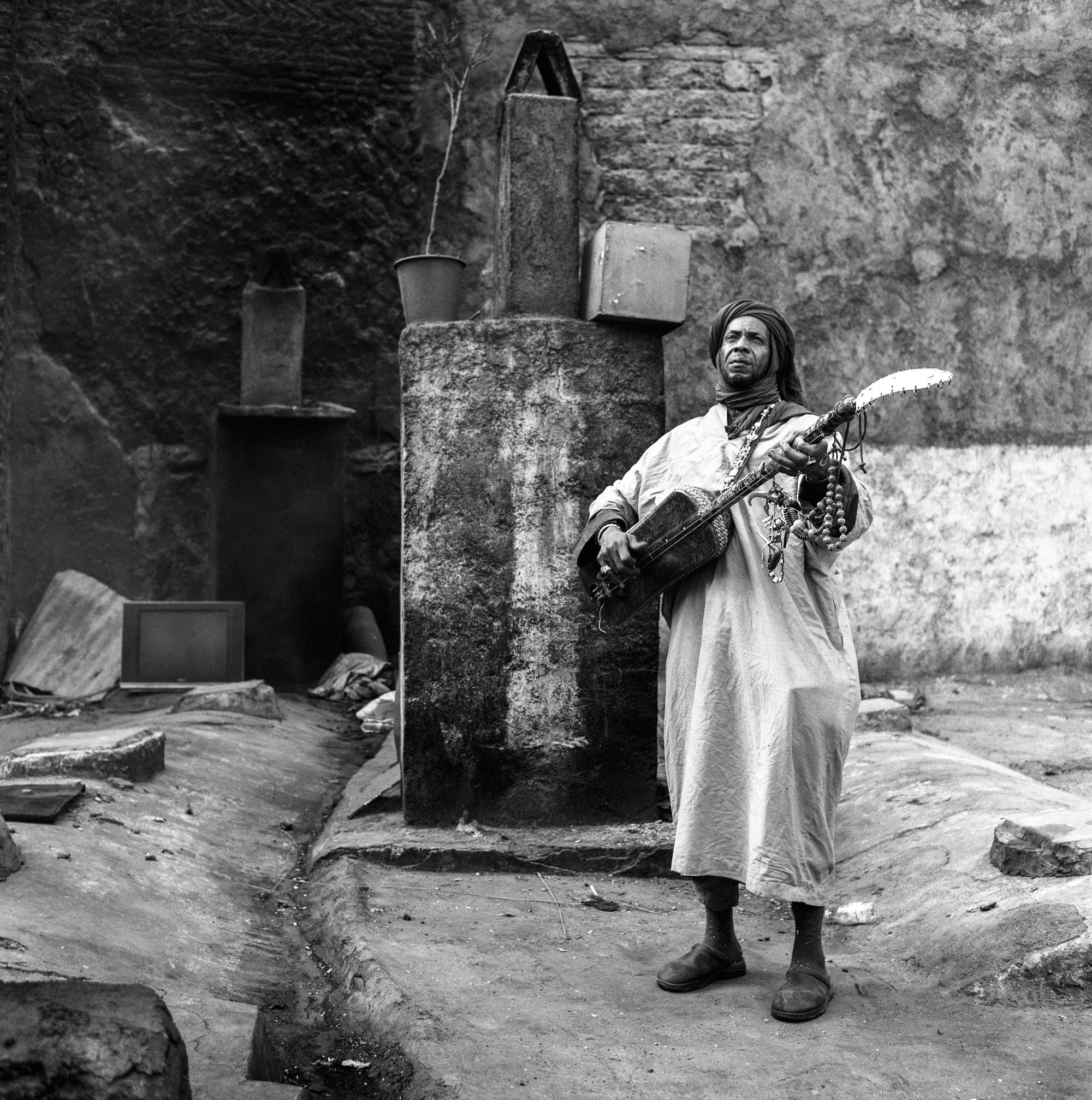
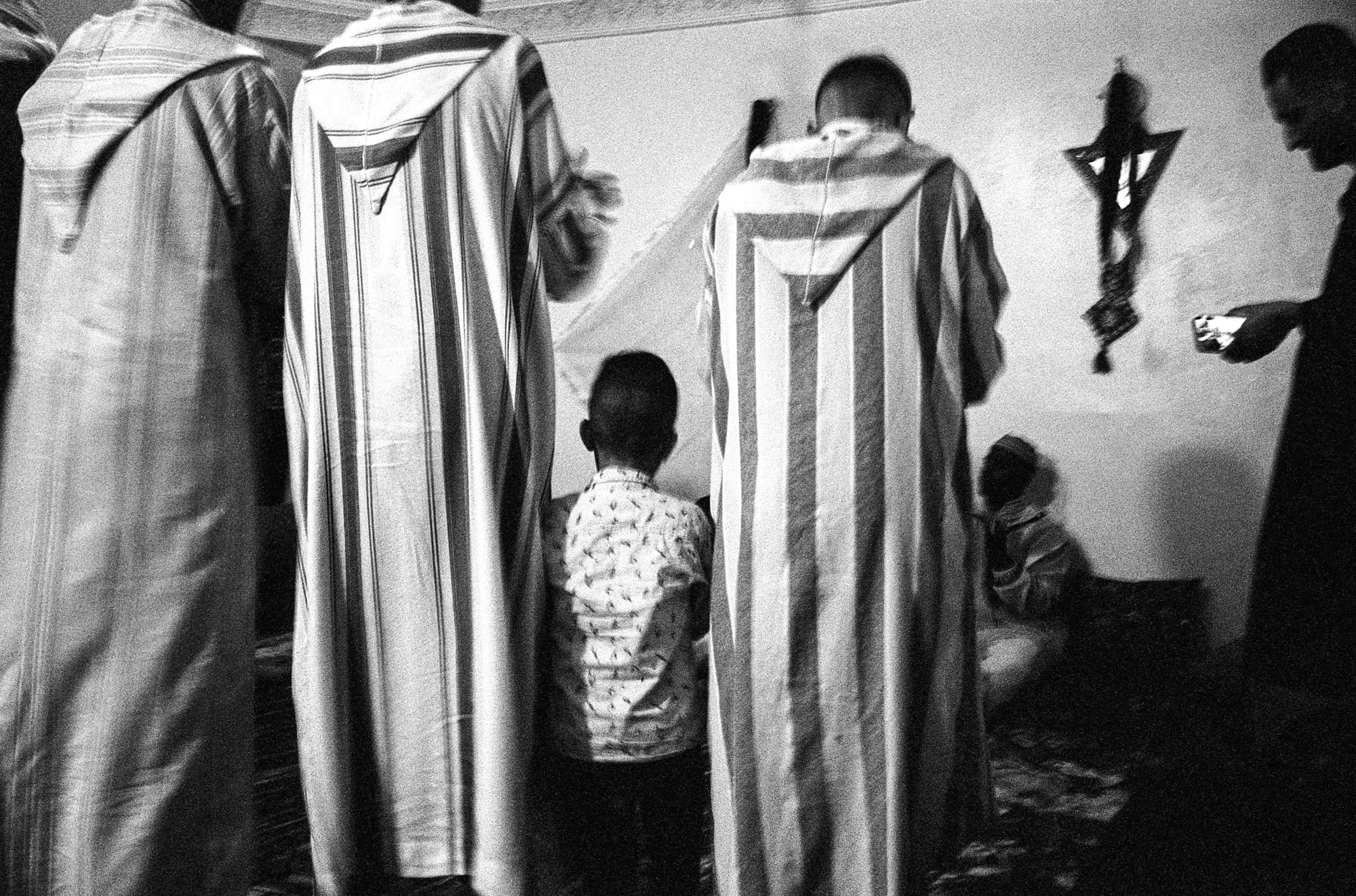
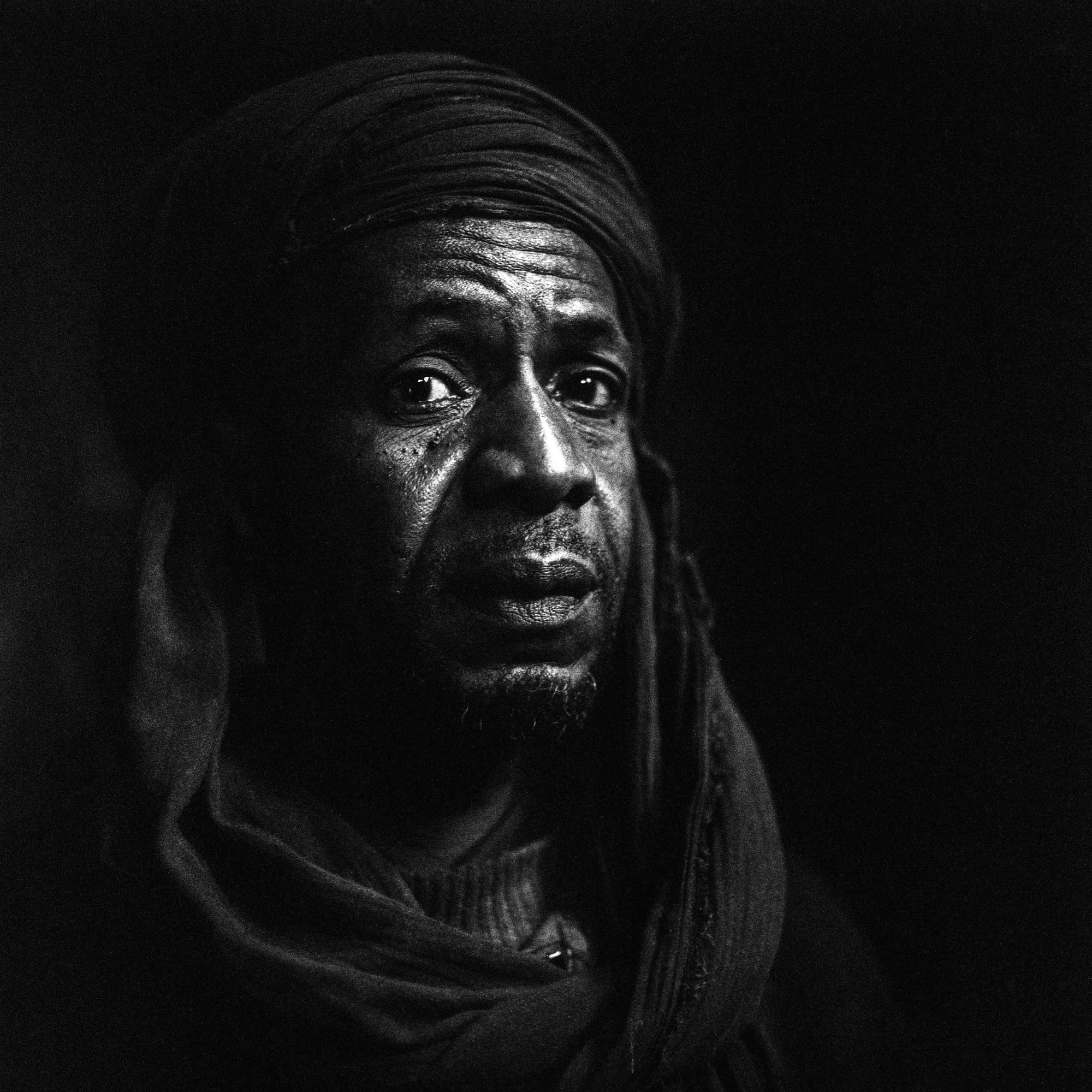
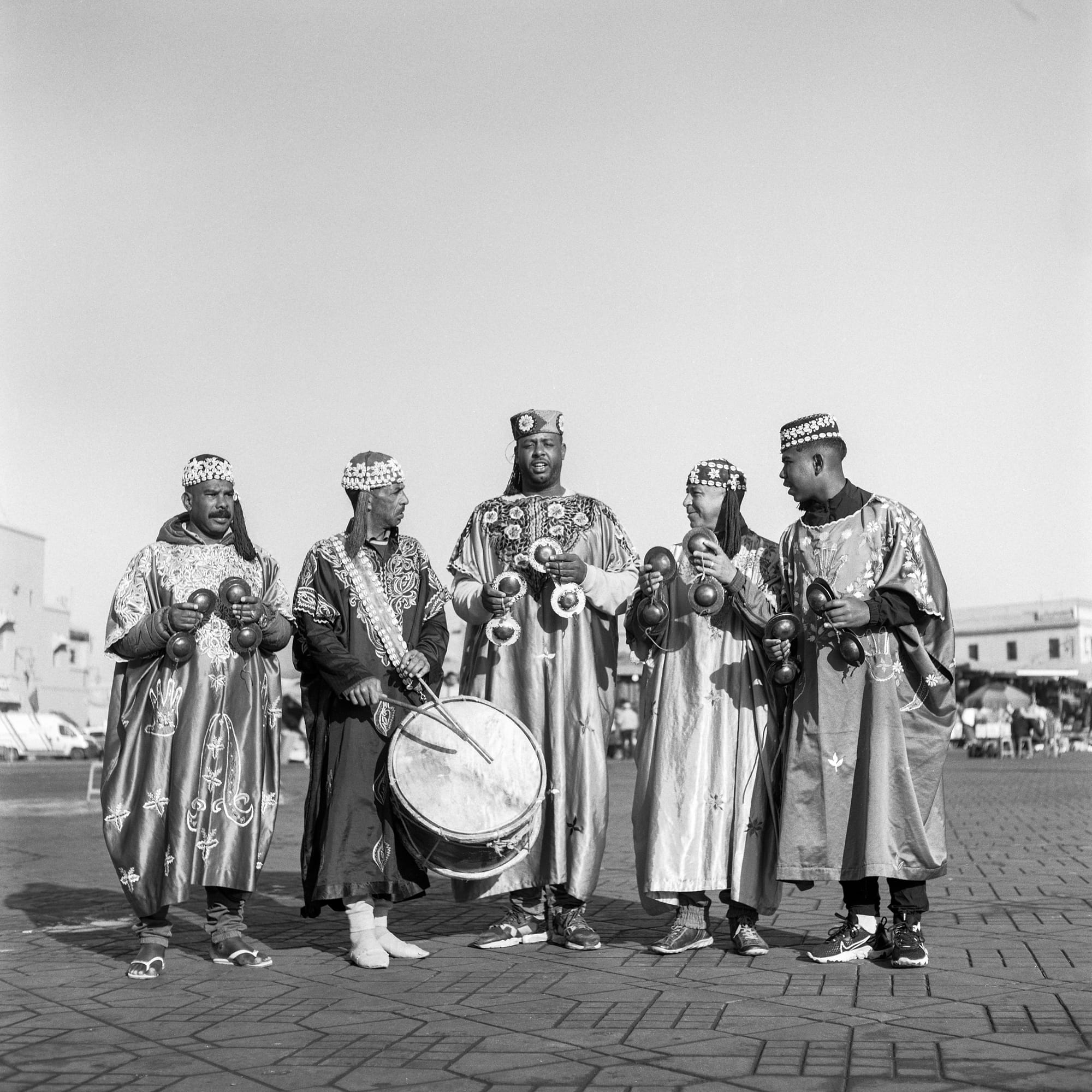
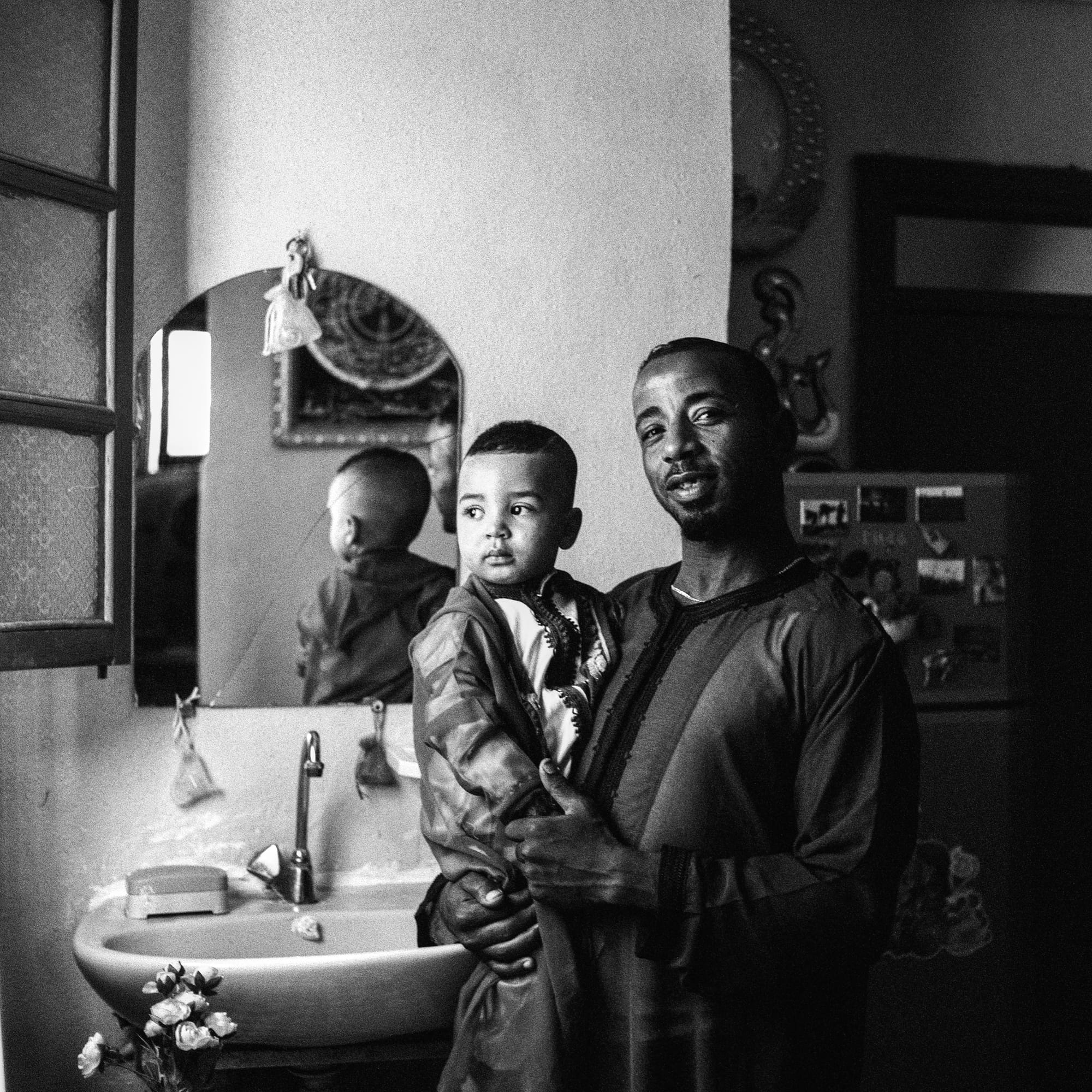
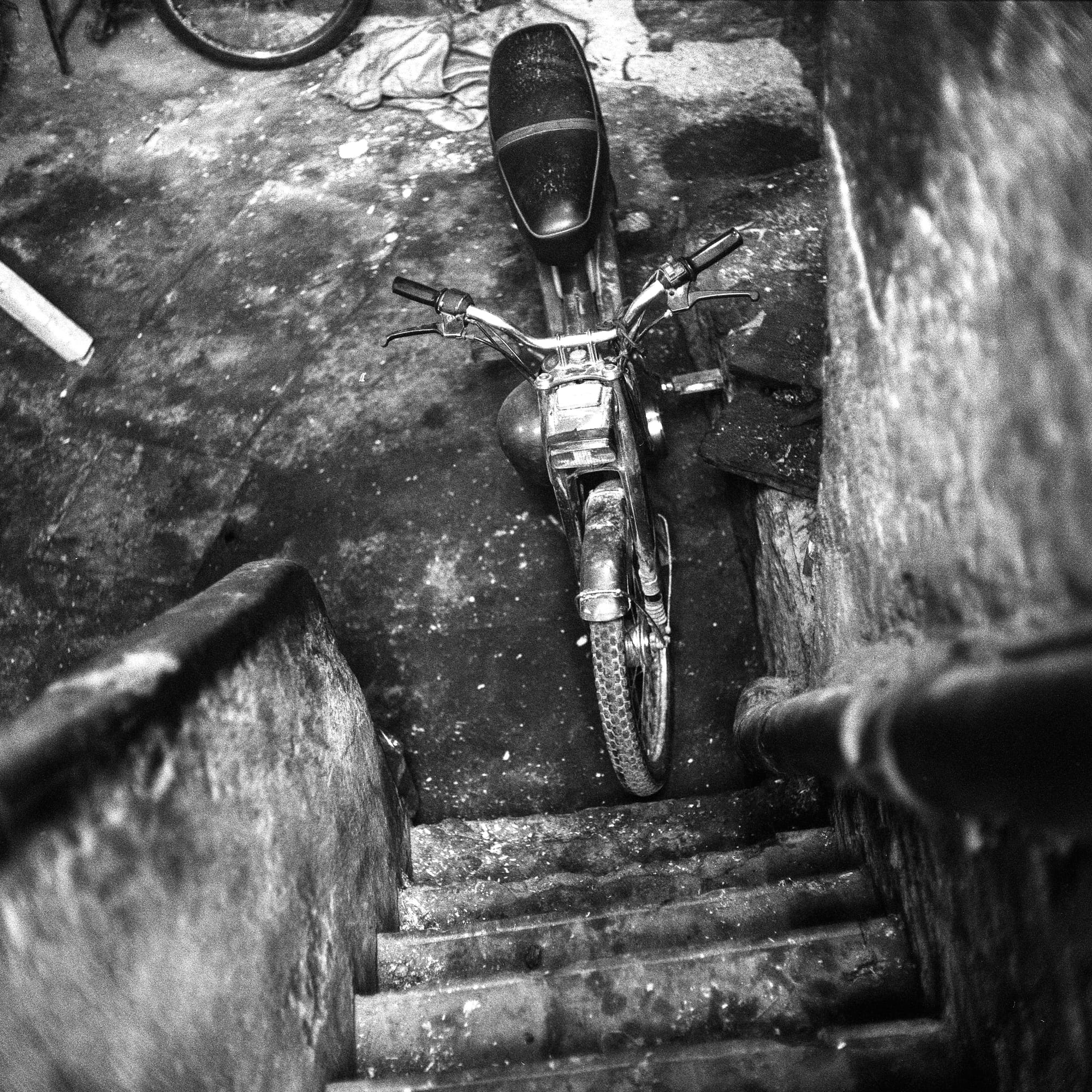
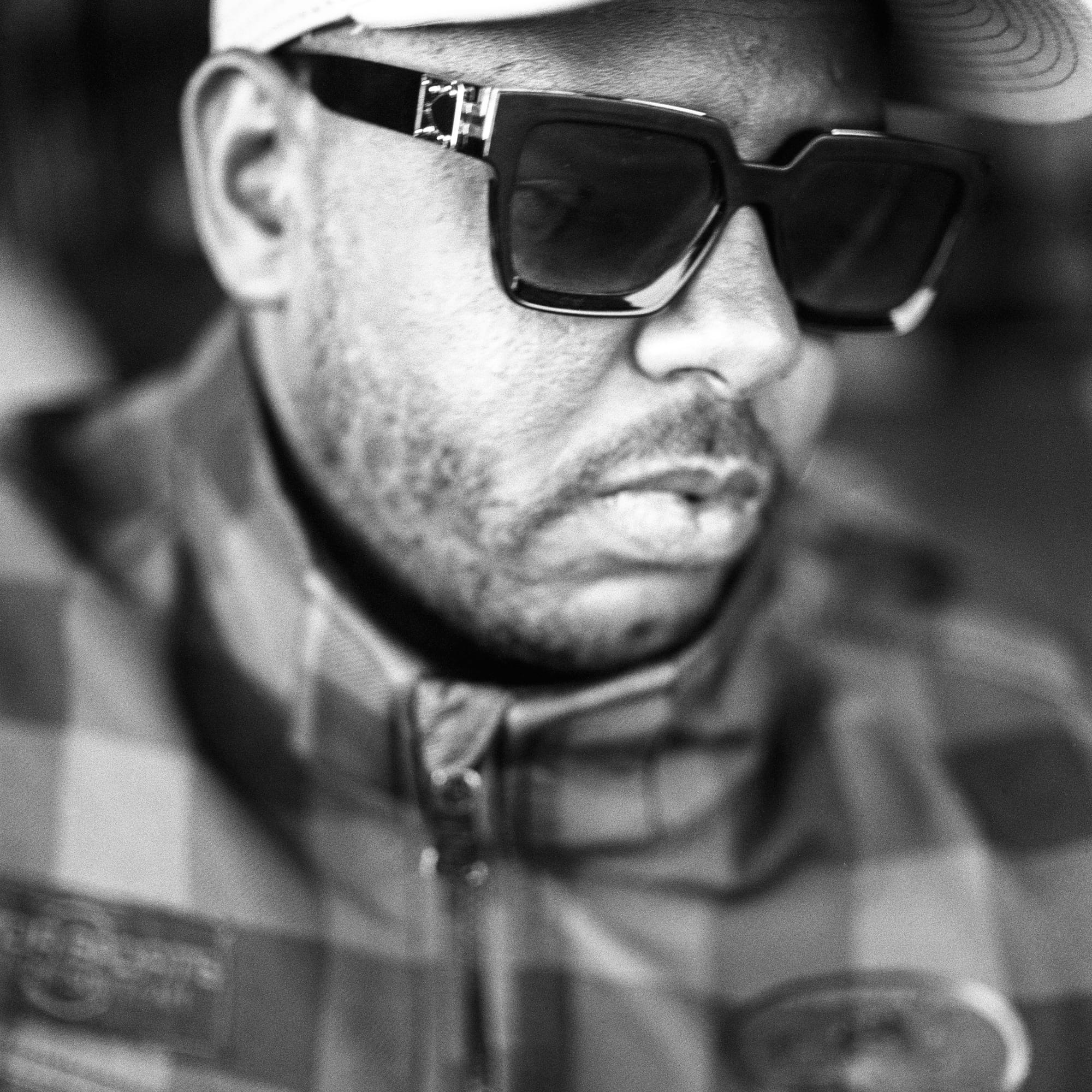
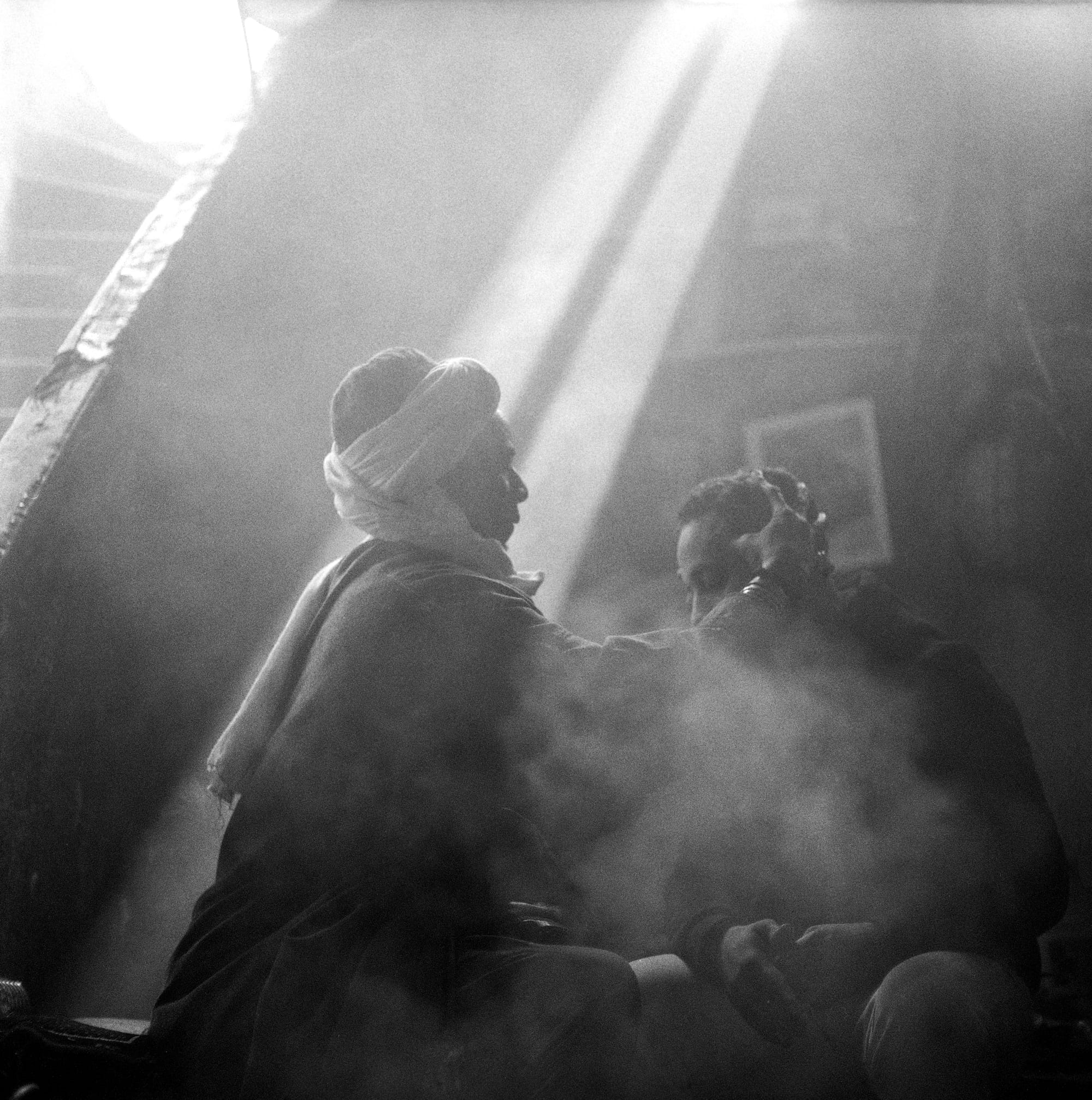
Simon Arcache biography
Simon Arcache is a French photographer born in 1992 in the Paris region, where he lives.
He trained in photography in the United States while accompanying blues musicians on stage as a guitarist and sharing their daily lives. Deeply influenced by this experience and by the universal process of transmission, the photographer has since been interested in the intimacy of different communities, inviting us to rethink our relationship with others, identity, societies, and history. His approach lies somewhere between documentary photography and artistic photography.
His background as a musician brings him closer to the performing arts and the world of arts, with which he maintains close professional relationships, both in France and internationally.
His work has been the subject of several exhibitions and publications in the photographic press. He is the recipient of the Regnier Fund Photographic Mentorship with the VU' Agency for "The Sons of Bambara" (2023-2024) and the Voltaire Photography Prize with the Center for National Monuments for "Going Up, Going Down" (2023-2024).
